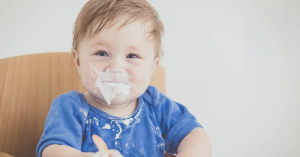Cerebral Palsy (CP) is a group of disorders affecting movement, posture, and coordination, often caused by abnormal brain development or injury during early development. While CP is primarily characterized by physical disabilities, its impact often extends to cognitive and social domains. These interconnected challenges influence a child’s overall well-being and development.
Physical Challenges of Cerebral Palsy
The defining feature of CP is its effect on movement and posture, with severity varying widely among individuals.
1. Motor Impairments
• Spasticity: Stiff and tight muscles hinder smooth movement and cause discomfort.
• Ataxia: Poor balance and coordination affect activities like walking, writing, and self-care.
• Dyskinesia: Uncontrollable, involuntary movements disrupt posture and motor control.
2. Mobility Limitations
Children with CP may struggle with walking, sitting, or grasping objects. Mobility aids such as braces, walkers, or wheelchairs are often necessary. For some, even basic self-care tasks like dressing or eating may require assistance.
3. Secondary Physical Issues
• Orthopedic Complications: Conditions like scoliosis, hip dislocations, and contractures are common.
• Chronic Pain: Muscle stiffness and misalignment often lead to persistent discomfort.
• Epilepsy: Seizures are present in about 35% of children with CP, requiring specialized care.
Cognitive Challenges in Children with Cerebral Palsy
Although CP primarily affects motor function, some children experience cognitive challenges that impact learning and development.
1. Learning Disabilities
• Cognitive impairments can range from mild to severe, affecting memory, attention, and problem-solving.
• Processing delays can make it difficult for children to follow instructions or keep up in school.
2. Speech and Communication Difficulties
• Dysarthria: Muscle weakness in the face and tongue leads to slow or slurred speech.
• Some children are non-verbal and rely on alternative communication methods, such as assistive technology or sign language.
3. Executive Function Deficits
• Challenges with planning, organization, and impulse control can interfere with daily tasks and academic success.
• Difficulty adapting to changes or managing emotions may lead to frustration or behavioral outbursts.
Social Challenges in Children with Cerebral Palsy
Social interactions play a crucial role in childhood development, but children with CP often face barriers that hinder their ability to form meaningful relationships.
1. Social Isolation
• Limited mobility or speech difficulties can restrict participation in group activities, reducing opportunities to bond with peers.
• Dependence on caregivers for daily tasks may limit exposure to social settings.
2. Stigma and Bullying
• Physical disabilities or reliance on assistive devices may lead to stigmatization or exclusion in school and social environments.
• Children with CP are at a higher risk of bullying, which can negatively affect self-esteem and mental health.
3. Emotional and Behavioral Challenges
• Feelings of frustration or low self-confidence may arise from struggles with communication or independence.
• Anxiety and depression are more common in children with CP due to social barriers and physical limitations.
Strategies to Support Children with Cerebral Palsy
While the challenges are significant, early intervention and ongoing support can greatly enhance a child’s quality of life.
1. Physical Therapy and Mobility Support
• Regular physical therapy helps improve strength, flexibility, and coordination.
• Assistive devices like wheelchairs, braces, or adaptive seating promote independence.
2. Cognitive and Educational Support
• Individualized Education Plans (IEPs) ensure accommodations for learning needs, such as extra time or modified instructions.
• Speech therapy and communication aids help children express themselves effectively.
3. Social and Emotional Development
• Encourage participation in inclusive activities like adaptive sports, art classes, or social clubs.
• Foster peer relationships through playdates or group therapies.
• Counseling or support groups can help children and families cope with emotional challenges.
4. Parental and Community Advocacy
• Parents can work closely with schools and healthcare providers to ensure appropriate accommodations.
• Raising awareness about CP in the community helps reduce stigma and fosters inclusion.
Conclusion
Children with cerebral palsy face a unique combination of physical, cognitive, and social challenges that require a multidisciplinary approach to care. By focusing on their strengths and providing tailored support, families and communities can empower these children to overcome barriers and achieve their full potential.
Understanding and compassion are key to creating an inclusive world where every child, regardless of their abilities, can thrive.
References
• Cerebral Palsy Foundation: www.yourcpf.org
• National Institute of Neurological Disorders and Stroke: ninds.nih.gov
• Journal of Pediatric Neurology: Research on interventions for children with CP.






